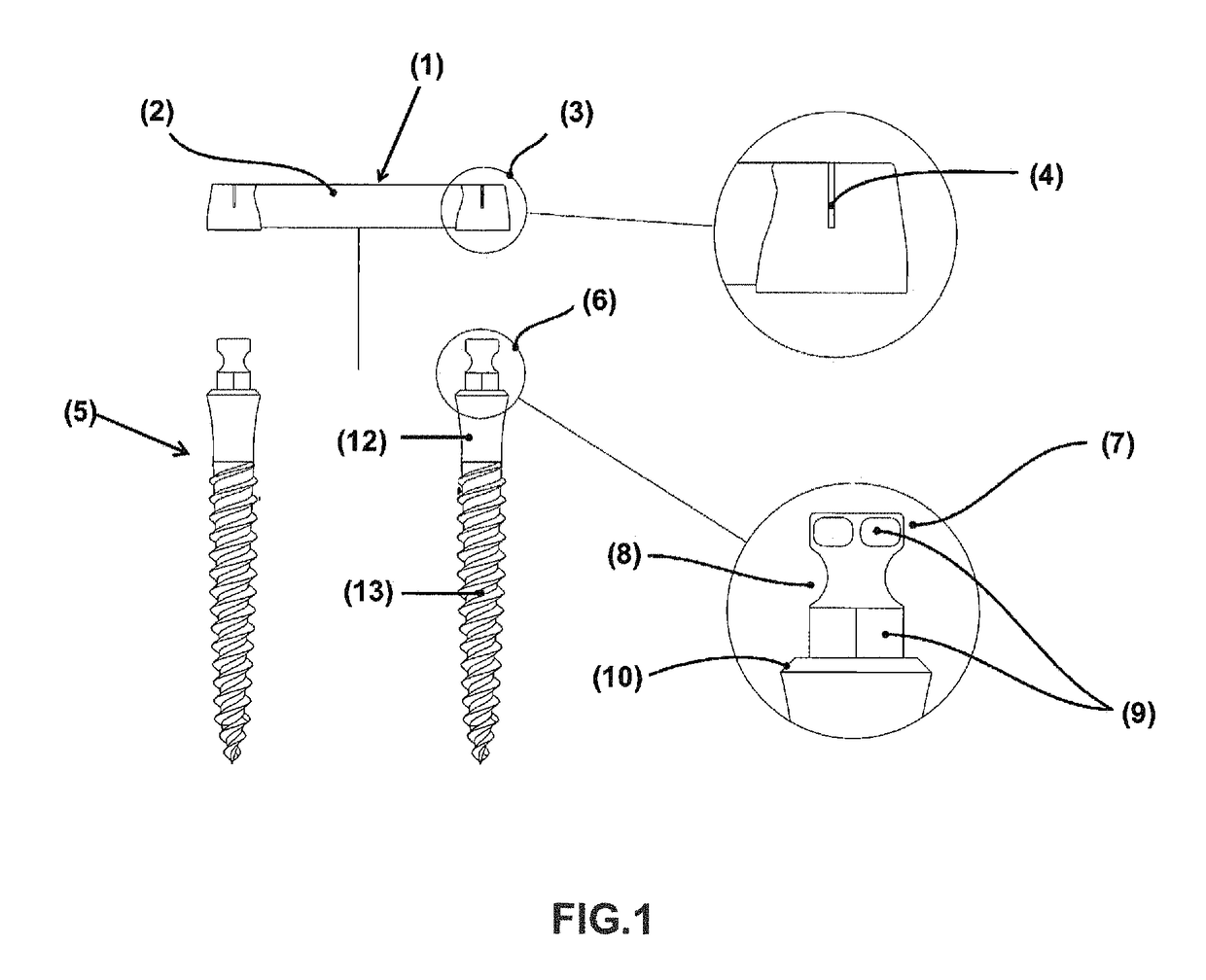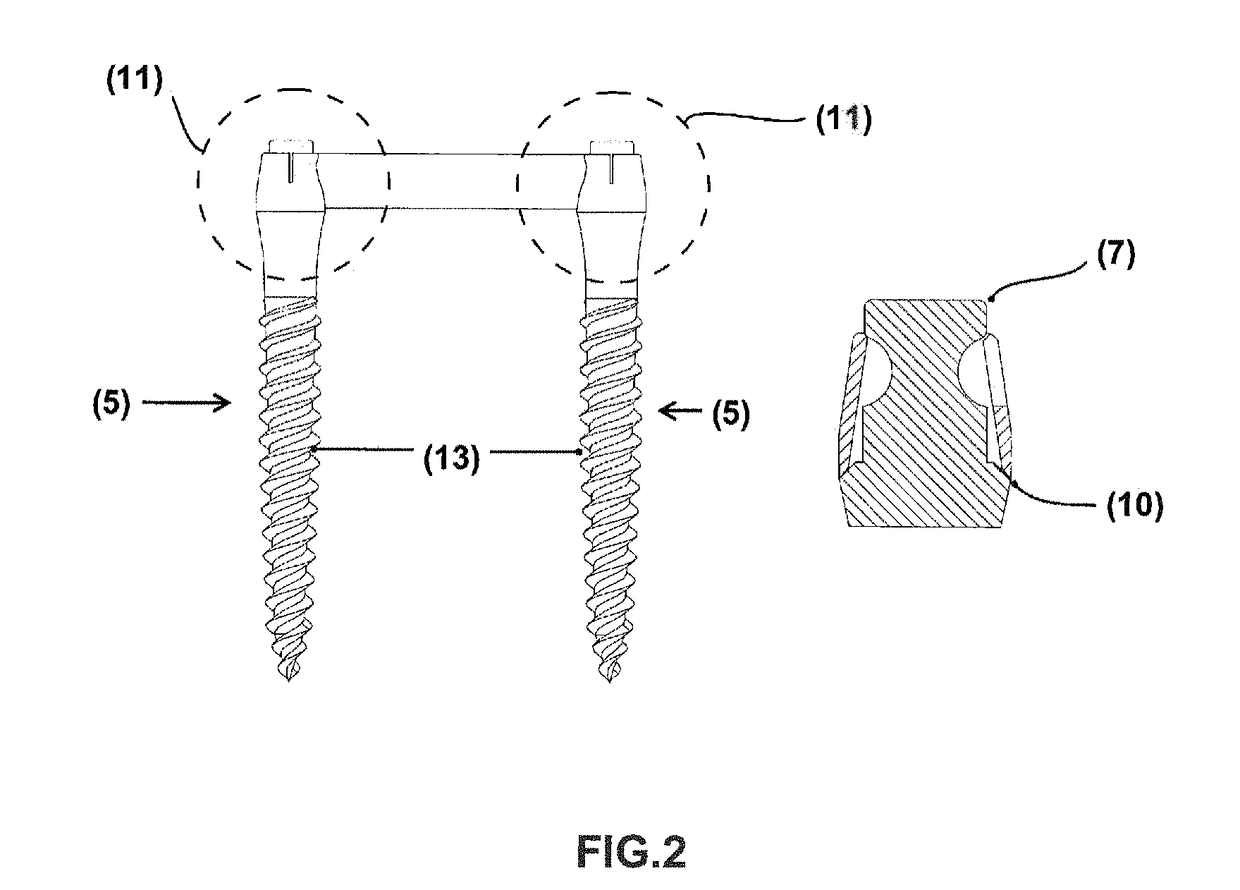Prosthetic retention system for edentulous patients consisting of a prefabricated bar and two implants
a technology of edentulous patients and implants, which is applied in dental implants, dental surgery, medical science, etc., can solve the problems of reducing the effectiveness of rehabilitative treatment, the difficulty of routine use in public health systems, and the inability to allocate funds to a large section of the population,
- Summary
- Abstract
- Description
- Claims
- Application Information
AI Technical Summary
Benefits of technology
Problems solved by technology
Method used
Image
Examples
application examples
[0031]In order to provide long-term treatment with reduced trauma, complexity and costs for edentulous patients, an integrated system was developed for stabilizing dental prostheses, comprising two implants and a prefabricated prosthetic bar. In addition, instruments such as a 3D positioning guide-forceps and a telescopic insertion support were used to facilitate insertion.
[0032]The surgical procedure used to verify the effectiveness of the technology is described below (see FIG. 3):
[0033]First, infiltration local anesthesia was applied and a guide-forceps (1) was used to measure the thickness of the osseous tissue in the implant area. This guide-forceps made it possible to carry out perforations for the implants in a minimally invasive fashion, without the need for a gum flap. Perforations were carried out with 1 mm drills (2) in the center of the mandible and in areas with a minimum bone thickness of 2 mm.
[0034]Then, the first implant (3) was inserted and the position of the force...
PUM
 Login to View More
Login to View More Abstract
Description
Claims
Application Information
 Login to View More
Login to View More - R&D
- Intellectual Property
- Life Sciences
- Materials
- Tech Scout
- Unparalleled Data Quality
- Higher Quality Content
- 60% Fewer Hallucinations
Browse by: Latest US Patents, China's latest patents, Technical Efficacy Thesaurus, Application Domain, Technology Topic, Popular Technical Reports.
© 2025 PatSnap. All rights reserved.Legal|Privacy policy|Modern Slavery Act Transparency Statement|Sitemap|About US| Contact US: help@patsnap.com



